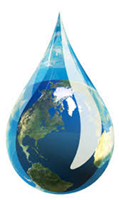CGW4U
World Issues: A Geographic Analysis
Unit 4: Environmental Sustainability
Activity 2: What is the greatest challenge to achieving global water security?
People who look at a map of Canada might think we likely have little reason to be concerned about our personal water supply. Environment Canada says that we have 7% of the world's renewable fresh water. Population numbers change all the time, so for argument's sake we'll say our population is 36 million of a global 7.3 billion. This means that we make up somewhere between .5 and 1% of the global population. Just by these numbers, how could anyone living in Canada experience water insecurity? As you will see in this activity, too many Canadians have exactly that problem - they are living with water insecurity everyday!
Watch as National Geographic explains why we must care about water.
What we are really talking about here is an issue of “water security.” The UN defines water security as:
The capacity of a population to safeguard sustainable access to adequate quantities of acceptable quality water for sustaining livelihoods, human well-being, and socio-economic development, for ensuring protection against water-borne pollution and water-related disasters, and for preserving ecosystems in a climate of peace and political stability
So the goal is to achieve water security for everyone.
But what is the greatest challenge to achieving water security?
What is Water Security?
UN Water
Water is arguably our most important resource. Perhaps this is why many people believe that if there was to be another world war it would be over water.
Like all of issues you have studied in this course, water security is complex. It is also not a new issue. In fact, many decisions that were made by ancient civilizations were contingent upon water availability, and conflicts throughout history have centred upon access to water.
The UN has often responded to crises of insufficient water, increasing demands for people, and their industries.
Water was a Millennium Development Goal (MDG) and universal access to clean water and sanitation is a UN Sustainable Development Goal.
This is an issue on every continent, and one that will be intensified by climate change. The time to achieve water security is now.
In this activity, you will be researching the following five aspects of water security so that you can complete this activity's consolidation task. Then you will be required to communicate your understanding of the complexity of creating a world where all people enjoy water security. Be sure to carefully use all the resources that have been made available to you.
Please note that there is a huge range of issues associated with global water scarcity. The five selected illustrate the types of challenges we face globally. This is in no way intended to be a complete or exhaustive list of regions and issues affected by global water insecurity.
Before you begin your research, review these graphics to contextualize the water security issues in this activity. Click on each image to see an enlarged version.
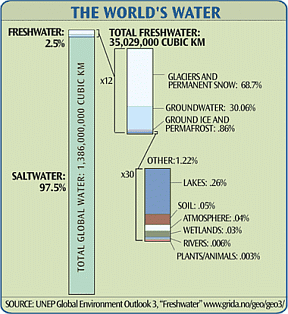
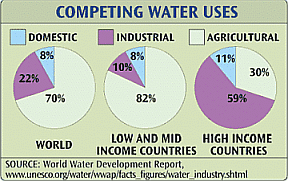
You will select TWO case studies from options A, B, C, and D, and everyone will complete Case Study E. Covering three of the topics below will provide you with an overall understanding of the issue of water security, while also allowing you to select topics that are of personal interest.
Choose TWO of:
Case Study A - First Nations: Why do so many Canadian First Nations people live without water security?
Case Study B - India: What role do local attitudes, beliefs and behaviours play in water security?
Case Study C - Industrial Uses of water: What responsibility does Industry have for those downstream?
Case Study D - Water withdrawals: Who should be in control?
Everyone will complete:
Case Study E - Rights: Is water a human right?
CASE STUDY A
First Nations: Why do so many Canadian First Nations people live without water security?

First Nations child with skin infection
Twitter
Their town has been boiling water to make it safe to use for 20 years. What role would water security play in this child’s health? This research may be very close to home. This is not a problem only for northern reserves.
Canada's Water Insecurity
Conduct research (note taking, citing resources and synthesis of ideas in and between resources) relating to the interrelationship of causes for water insecurity in a country abundant with fresh and safe water supplies. Your research will need to include specific measures of the quality of life people are experiencing in relation to their level of water security.
When you are completing the “significance” part of your Cornell notes, reflect on the plight of these Canadians and the ethical issues that arise from their situation.
As you move to the other case studies, ask yourself what cultural assumptions we make about people and about water in different locations around the world. Are these assumptions based on fact or are they based on stereotypes? What would people in other parts of the world think about our attitudes to water?
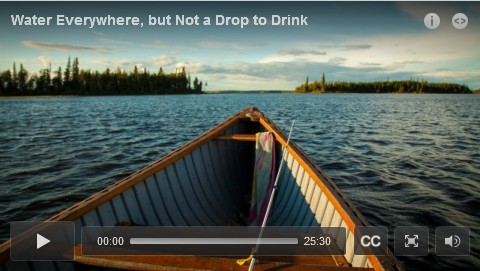
If you want to visit any links in the following pdfs, right click and select "Open Link in New Tab" to avoid leaving this page.
CASE STUDY B
India: What role do local attitudes, beliefs and behaviours play in water security?
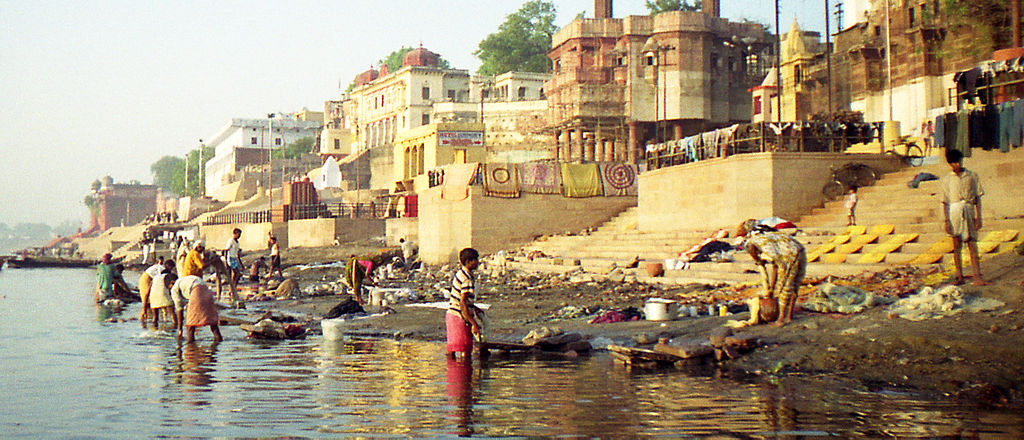
The Ganges as seen in the city of Varanasi.
Wikipedia
India's Water Insecurity
Using India as a case study, conduct research (note taking, citing resources and synthesis of ideas in and between resources) relating to the role local attitudes, beliefs and behaviours play in water security. Here, as with Canada’s First Nations, the water of the Ganges is spiritually significant. Also, think about disparity of the quality of life experienced by portions of the population.
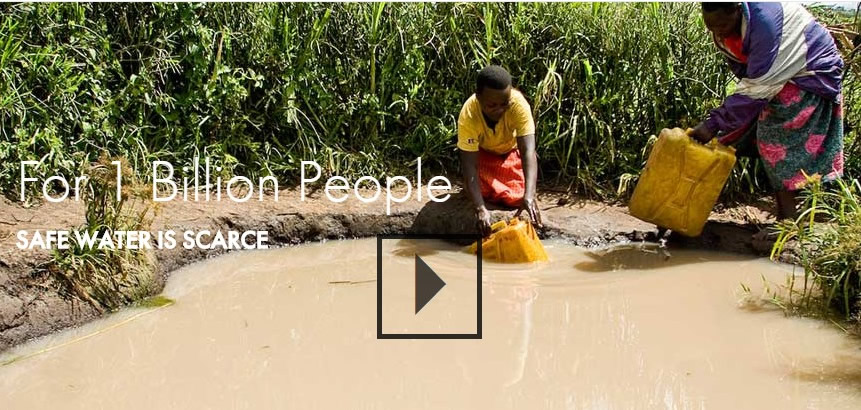
If you want to visit any links in the following pdf, right click and select "Open Link in New Tab" to avoid leaving this page.
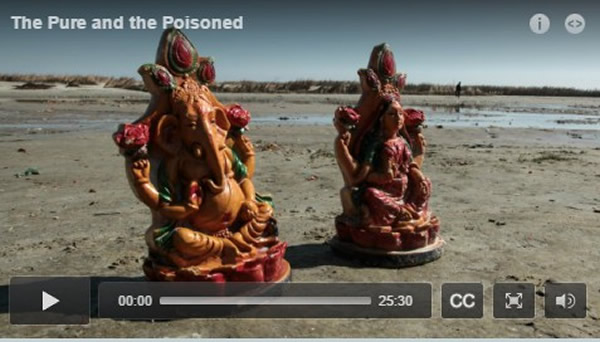
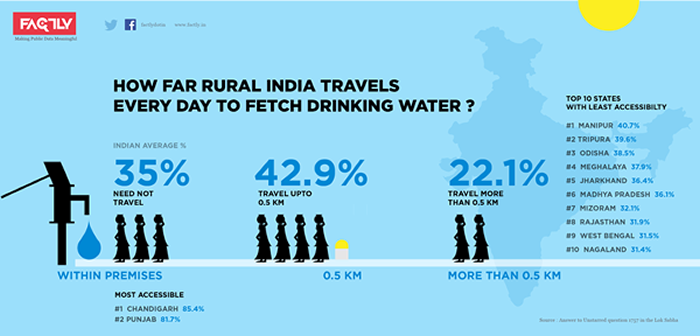
CASE STUDY C
Industrial Uses of water: What responsibility does Industry have for those downstream?
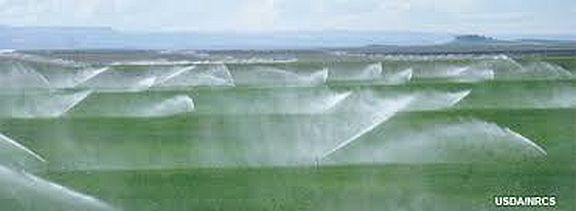
Farm field being irrigated by sprinklers
USDA
Industrial Uses of Water
Industrial activity, like agriculture and open pit mines, can account for many different types of water contamination. Here you will research two types of industrial activity that negatively affect water, either by the amount extracted, or by the waste that is carried (intentionally or unintentionally) into the lakes and rivers near the industrial activity. Consider the social and political conflicts that can arise between the industry upstream, and the people downstream.
Agriculture
If you want to visit any links in the following pdfs, right click and select "Open Link in New Tab" to avoid leaving this page.
Oil Sands
If you want to visit any links in the following pdfs, right click and select "Open Link in New Tab" to avoid leaving this page.
CASE STUDY D
Water withdrawals: Who should be in control?
Water Withdrawals: Who Should be in Control?
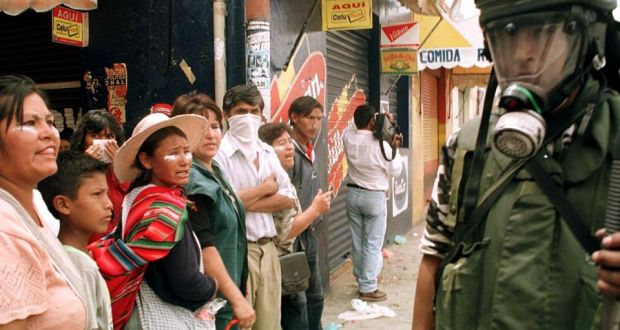
Street vendors protesting against a 20 per cent increase in the
cost of water yell at riot police in 2000, in Cochabamba, Bolivia.
The Irish Times
We began this course using water as an example of a global commons resource. One of the great issues for global commons resources is the question of ownership. Who owns, or should own a body of water that runs through, or is located in multiple political jurisdictions? Should control of water be in the hands of government or in the hands of a corporation?
If you want to visit any links in the following pdfs, right click and select "Open Link in New Tab" to avoid leaving this page.
CASE STUDY E
Rights: Is water a human right?
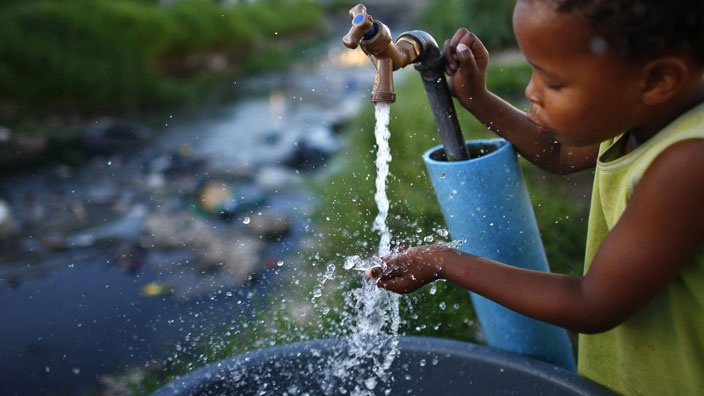
Access to water is essential for life. Is access a human right? What does that mean?
Deutschland.de
We forget that the water cycle and the life cycle are one.
Rights: Is Water a Human Right?
Water, a necessity for life, yet we do not all agree what this looks like. Do we all have equal access? Do we pay the same price? Do we have the same quality of water? In this final research task for our most important resource, it is likely that we all believe water is a human right, but how do we get past the barriers of equal access to that resource?
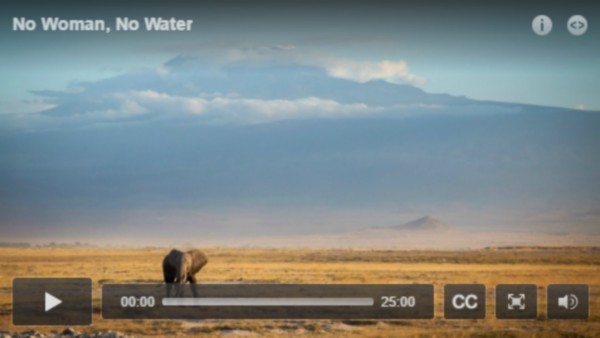
If you want to visit any links in the following pdfs, right click and select "Open Link in New Tab" to avoid leaving this page.
 Global Water Security Research Summary
Global Water Security Research Summary
Summarize your research by answering the following questions:
- Does the availability of water impact the local quality of life? What is your evidence?
- When there are disparities in the distribution or quality of water available to different regions in a country, do conflicts arise? What is your evidence?
- Who seems to have the power to 'control the water' in these situations? What is your evidence?
- Do ethical considerations play a role in the control and development of water resources? What examples from your research support your answer?
 Global Water Security Speaking Notes
Global Water Security Speaking Notes
Using information and data from the three case studies you looked at, prepare speaking notes for a presentation that will be made at the UN’s conference on Global Water Security.
Topic: What is the greatest challenge to achieving global water security?
Attributes of speaking notes:
- full sentence notes;
- organized in a meaningful way;
- research is specific and fully sourced;
- examples are used to illustrate points being made.
In a paragraph (no more than 500 words) communicate your conclusion on the greatest challenge to achieving global water security. Be sure that your conclusion is based on your research, and specifically mentions the situations detailed in the three case studies you selected.
